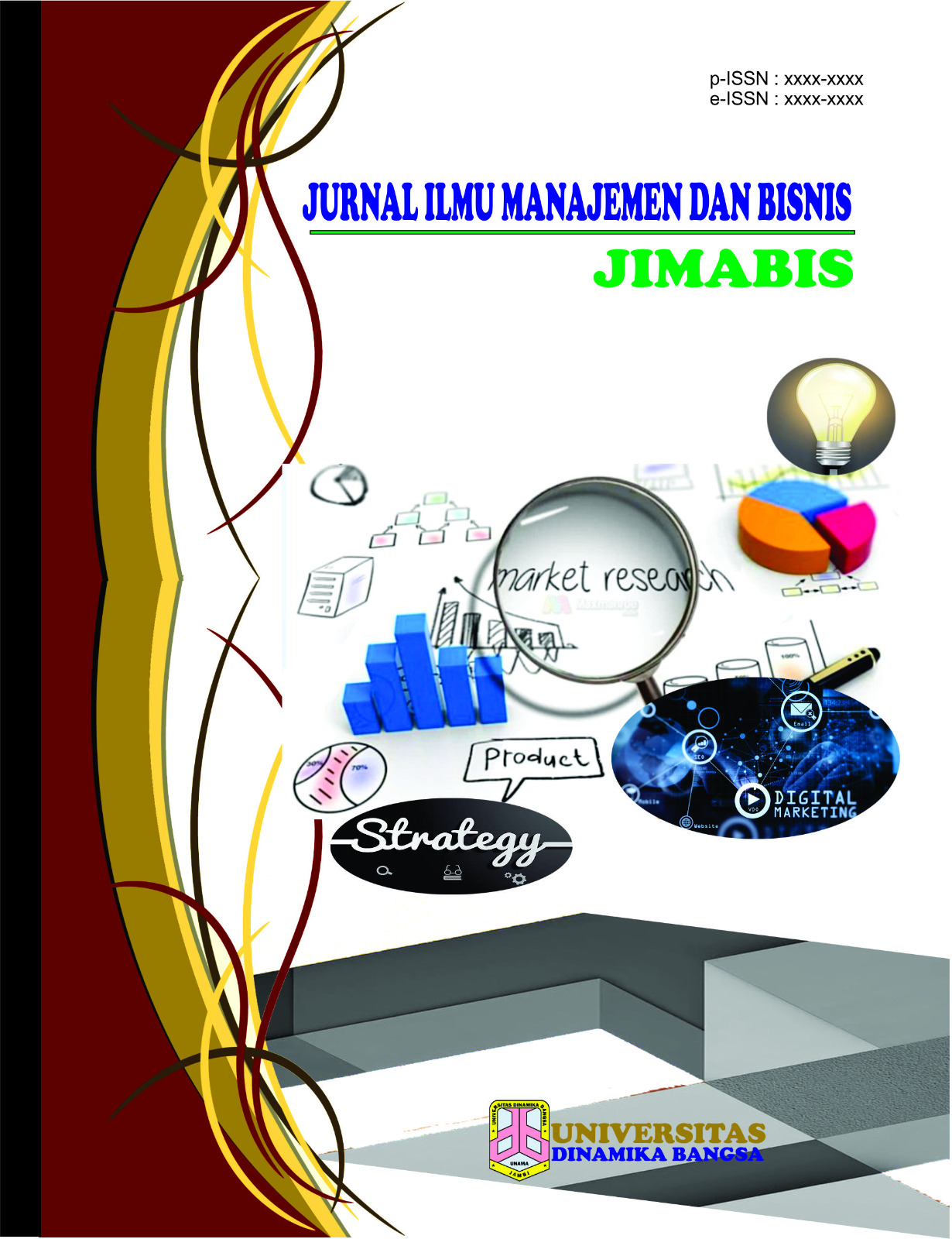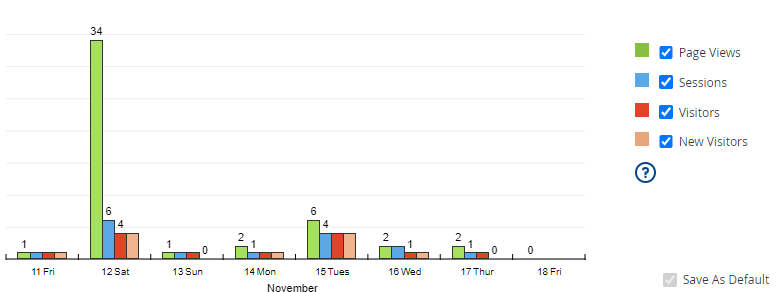Analisis Penerapan Metode User Centered Design dengan Pengujian Metode Cognitive Walkthrough
DOI:
https://doi.org/10.33998/processor.2024.19.1.1639Keywords:
Museum, Siginjei Museum, User Centered Design, Cognitive Walkthrough, WebsiteAbstract
The Siginjei Jambi Museum is one of 439 museums in Indonesia which stores and exhibits various collections of historical relics and civilizations from the past and is real evidence of history that has occurred so it is worthy of being used as a source of learning and tourist visits. The management of the Siginjei Jambi Museum is still a traditional museum, so the Siginjei Jambi Museum needs to innovate by implementing information technology in the form of an e-museum or website to increase the number of visitors and can be accessed quickly without space and time constraints. Interface design is an important thing that needs to be considered before creating a website so that the website created can meet user needs. The researcher created the interface design for the E-Museum Siginjei Jambi website using the user centered design method because with this method the interface design is designed based on user input. The results of testing the design that was created using the cognitive walkthrough method with a total of 5 respondents were learnability 97.7%, error 1.77%, and efficiency 94.3%.
Downloads
References
N. P. D. Prabawati, “Peran Pemuda Dalam Kegiatan Pengembangan Pariwisata Di Desa Tibubeneng, Kabupaten
Badung, Bali,” J. Kepariwisataan Indones. J. Penelit. dan Pengemb. Kepariwisataan Indones., vol. 13, no. 1, pp. 73–
, 2019, doi: 10.47608/jki.v13i12019.73-84.
S. A. Septemuryantoro, “Pengembangan Potensi Kampung Dolanan Anak dengan Pemanfaatan Teknologi dalam
Adaptasi Kebiasaan Baru di Desa Wisata Walitelon Utara Kabupaten Temanggung,” J. Abdimas Pariwisata, vol. 2,
no. 2, 2021.
P. Dwihantoro, D. Susanti, P. Sukmasetya, and R. Faizah, “Digitalisasi Kesenian Njanen: Strategi Pelestarian
Kebudayaan Melalui Platform Sosial Media,” Madaniya, vol. 4, no. 1, pp. 156–164, 2023.
Devi, A. Sunoto, and Hendrawan, “Perancangan Sistem Informasi Penjualan Pada,” J. Ilm. Mhs. Sist. Inf., vol. 2, no.
, pp. 133–144, 2020.
G. A. Gulo, N. W. Nurhidayati, D. Aprillia, and M. Maruloh, “Sistem Penunjang Keputusan Pemilihan Karyawan
Terbaik Di Restoran Soto Pak J Menggunakan Metode Ahp,” J. Larik Ldng. Artik. Ilmu Komput., vol. 1, no. 1, pp.
–20, 2021, doi: 10.31294/larik.v1i1.504.
D. Darwis, N. Siskawati, and Z. Abidin, “Penerapan Algoritma Naive Bayes Untuk Analisis Sentimen Review Data
Twitter Bmkg Nasional,” J. Tekno Kompak, vol. 15, no. 1, p. 131, 2021, doi: 10.33365/jtk.v15i1.744.
A. N. Isneni, T. T. Putranto, and D. Trisnawati, “Analisis Sebaran Daerah Rawan Longsor Menggunakan Remote
Sensing dan Analytical Hierarchy Process (AHP) di Kabupaten Magelang Provinsi Jawa Tengah,” J. Geosains dan
Teknol., vol. 3, no. 3, pp. 149–160, 2020, doi: 10.14710/jgt.3.3.2020.149-160.
M.Syarifuddin Yusuf, “IMPLEMENTASI METODE ANALYTIC HIERARCHY PROCESS (AHP) DALAM
KELAYAKAN PENGAJUAN KREDIT PADA BMT UMMAT SEJAHTERA ABADI JEPARA,” J. Al-ilmi, vol. 13,
no. 1, pp. 110–117, 2021.
A. Ferdiansyah and H. Kurniawan, “Perancangan Aplikasi Media Pembelajaran Pengenalan Kain Nusantara
Menggunakan Augmented Reality Berbasis Android,” It (Informatic Tech. J., vol. 7, no. 2, p. 196, 2019, doi:
22303/it.7.2.2019.196-205.
M. Adenuddin Alwy, “Manajemen Sumber Daya Manusia Di Era Digital Melalui Lensa Manajer Sumber Daya
Manusia Generasi Berikutnya,” SIBATIK J. J. Ilm. Bid. Sos. Ekon. Budaya, Teknol. dan Pendidik., vol. 1, no. 10, pp.
–2276, 2022, doi: 10.54443/sibatik.v1i10.334.
M. R. Rusman, Budaya dan Kontrasepsi. Pasuruan: Qiara Media, 2020.
Y. Lukito and A. R. Chrismanto, “Recurrent neural networks model for WiFi-based indoor positioning system,”Proceeding 2017 Int. Conf. Smart Cities, Autom. Intell. Comput. Syst. ICON-SONICS 2017, vol. 2018-Janua, no. 118,
pp. 121–125, 2018, doi: 10.1109/ICON-SONICS.2017.8267833.
S. Mohanty, A. Tripathy, and S. Pradhan, “Performance Analysis of Two Different Pulses with SNR for UWB Indoor
Localization,” Int. J. Intell. Syst. Appl. Eng., vol. 12, no. 9s, pp. 150–155, 2024.
A. C. Willyan, M. Fajar, and B. Zaman, “Analisis Dan Desain Kembali Ui Game Smartest Brain Menggunakan
Metode Design Thinking,” KHARISMA Tech, vol. 17, no. 2, pp. 30–44, 2022, doi: 10.55645/kharismatech.v17i2.231.
A. C. Zarkasi, A. S. Wardani, and S. Sucipto, “Analisa User Experience Terhadap Fitur Di Aplikasi Zenius
Menggunakan Heart Framework,” METHOMIKA J. Manaj. Inform. dan Komputerisasi Akunt., vol. 6, no. 6, pp. 174–
, 2022, doi: 10.46880/jmika.vol6no2.pp174-179.
E. Tahirović and S. Krivić, “Interpretability and Explainability of Logistic Regression Model for Breast Cancer
Detection,” in Proceedings ofthe 15th International Conference on Agents and Artificial Intelligence (ICAART2023),
, vol. 3, no. Icaart, pp. 161–168, doi: 10.5220/0011627600003393.
A. Majiddan Nur, A. Putra Harjun, A. Rofiqoh, and I. P. W. Kartikaputra, “Analisis Usability Testing untuk
Mengevaluasi User Interface pada Game Nowhere,” J. Ilm. Multidisiplin, vol. 1, no. 12, pp. 4229–4237, 2022.
K. Widhiyanti, K. Dewangga, and F. Almukhtar, “Game Design Factor Questionerin User Experience Analysis on
Selera Nusantara Game,” Indones. J. Inf. Syst., vol. 4, no. 2, pp. 140–154, 2022, doi: 10.24002/ijis.v4i2.5449.
A. Sandria, H. Asy’ari, and F. Siti Fatimah, “Pembentukan Karakter Religius Melalui Pembelajaran Berpusat pada
Siswa Madrasah Aliyah Negeri,” At-tadzkir Islam. Educ. J., vol. 1, no. 1, pp. 63–75, 2022, doi:
59373/attadzkir.v1i1.9.
D. K. Pramudito, T. W. Nurdiani, B. Winardi, A. Y. Rukmana, and K. Kraugusteeliana, “Website User Interface
Design Using Data Mining Task Centered System Design Method At National Private Humanitarian Institutions,”
Indones. J. Artif. Intell. Data Min., vol. 6, no. 2, p. 281, 2023, doi: 10.24014/ijaidm.v6i2.25814.























